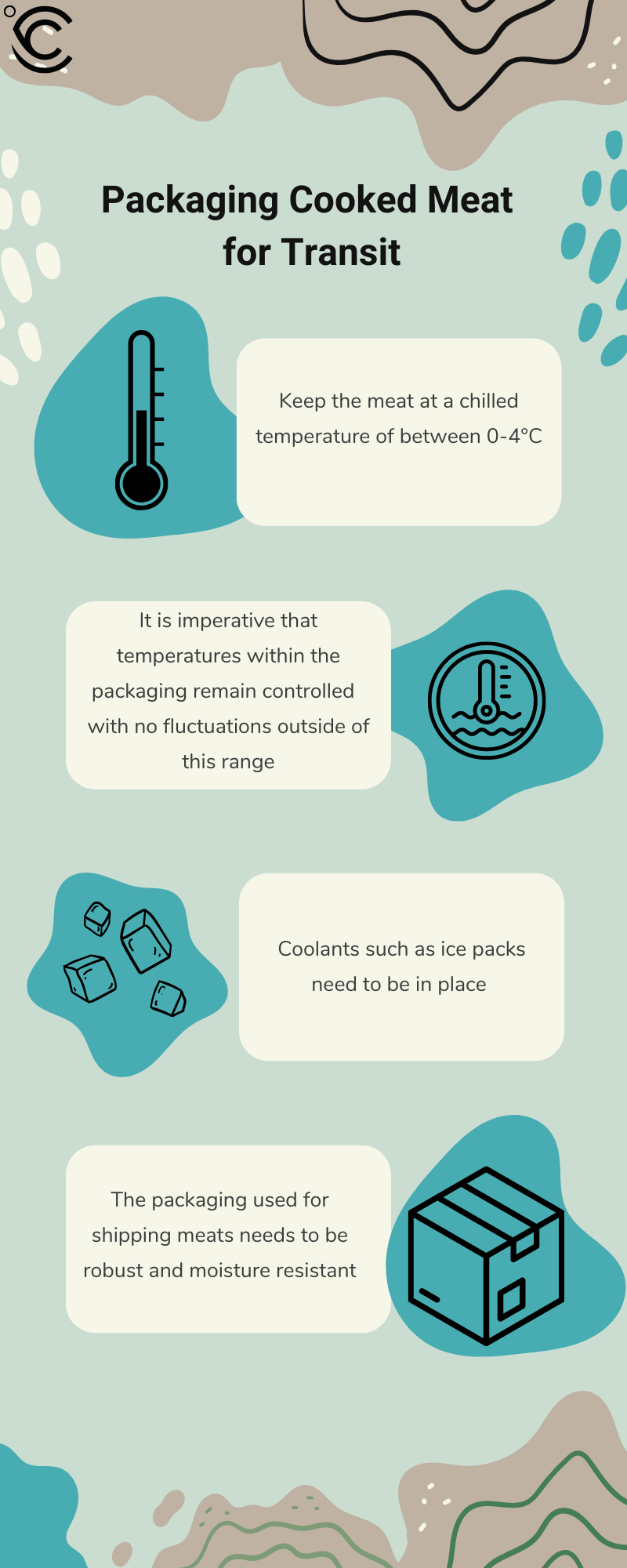Our latest shipping guide is all about the safe transport of cooked meats. The requirements for each type will vary but as a rule, all need to be kept cold during transit and storage.
Why do cooked meats need to be kept cold?
Chilling cooked meats will help to stop bacteria from growing. Certain bacteria, such as Salmonella, Norovirus and Campylobacter, are found in various foodstuffs (including meat) and these can cause serious health problems if ingested. Therefore, keeping cooked meats cold during transit helps to vastly reduce this risk.
FACT: 1 single bacterium doubles every 20 minutes. If left unchecked, at temperatures above 4°C, it can grow to over 2,097,152 bacteria in 7 hours.
What happens if cooked meats become too warm?
Cooked meats will start to see significant bacterial growth as above if left at temperatures above 4°C. Even though correct cooking procedures do eradicate most bacteria, the heat of cooking can germinate bacteria from raw meat to develop into vegetative cells that will multiply rapidly once left at ambient temperatures.
Different bacterium grow on different raw meats – these could then develop even on cooked meats if left at warm temps:
Beef
- Escherichia coli (E-Coli)
- Salmonella
- Clostridium perfringens
Poultry
- Campylobacter
- Avibacterium
- Salmonella
- Clostridium perfringens bacteria
Lamb
- E-Coli
- Campylobacter
- Salmonella
- Staphylococcus aureus
Packaging properly
There are some rules to follow when shipping meats. These include:
- Cooked meats should be shipped at temperatures between 0-4°C.
- It is imperative that temperatures within the packaging remain controlled and constant, with no fluctuations outside of this range.
- Coolants such as ice packs need to be in place – the quantity needed will depend on both the size of the ice pack and also the weight of the meats being shipped. Transit duration is also key.
In addition to the chilled requirements, the packaging used for shipping meats needs to be robust and moisture resistant. Ideally you will want to add tamper evident stickers so the end recipient knows the contents have not been interfered with.
Resources
- http://www.coolboxsolutions.co.uk/category/shipping-guides/ – our range of Shipping Guides including Fish, Fruit, Cheese and Chocolate.
